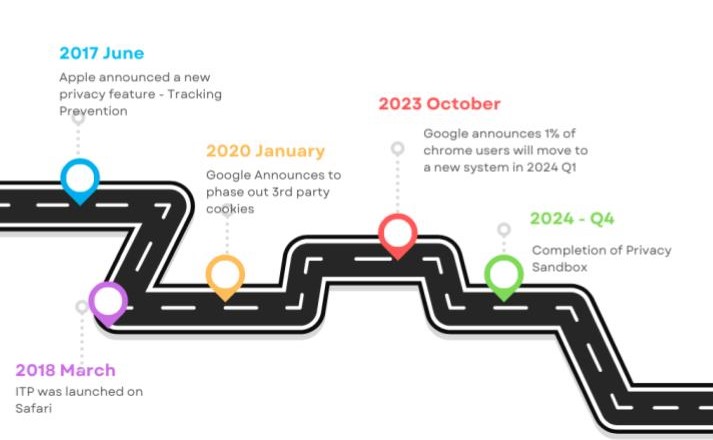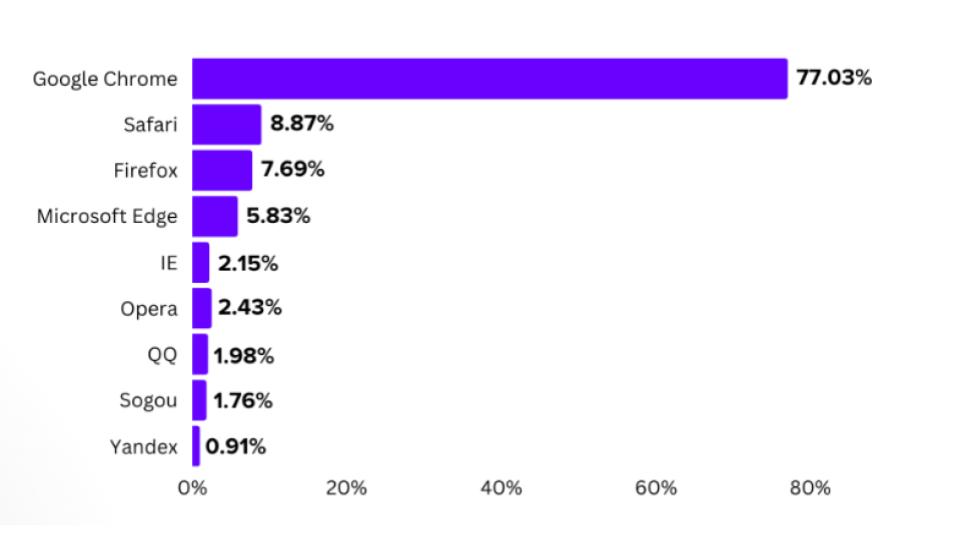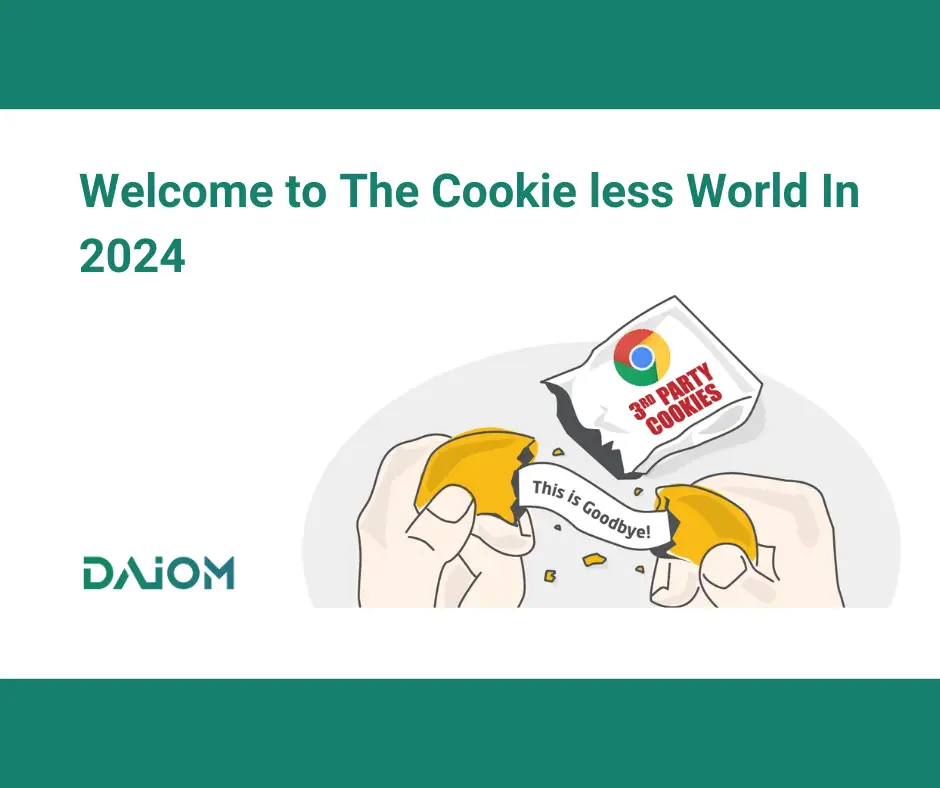For the past decades, digital advertisers have been relying on third-party cookies for advertising to measure the success of their marketing activities.
With third party cookies expected to phase out sooner due to privacy concerns, the marketers need a blueprint to operate in a cookieless era.
Starting 2024, Google will switch off cookies for 1% of the Chrome users and test the new Privacy Sandbox method.
Before we delve into the cookie-less marketing world, let’s understand what has happened and how it impacts the industry.
2. What are third-party cookies?
Have you ever wondered how ads seem to follow you around the internet? The answer lies in third-party cookies. Let’s say you’re shopping for sunglasses online.
As you browse different websites, the e-commerce site you visited stores a cookie on your browser. This cookie tracks your online behavior and collects data about your interests.
Why are they going away?
Third Party Cookies secretly follow you around the web, collecting a trail of your interests and habits. All the browsers are phasing out third-party cookies to make it harder for websites to sneakily track you, and have their own motives to leverage privacy and build on top of it.
3. What Google and Apple have been up to so far?
Think Different, Track Different.
Google announced that starting in 2022, its would no longer accept third-party cookies in the name of consumer privacy, phasing out 1% starting from 2024.
Chrome is not the first browser to oppose third-party cookies; Mozilla’s Firefox began working on reducing cookie power in 2013, while Apple’s browser Safari began avoiding user tracking by limiting cookie use in 2017.

4. How does this affect Marketers and Advertisers?
Chrome’s move will have the most far-reaching repercussions, as the browser controls about two-thirds of the global browser market. The way we utilize Google Analytics will alter dramatically when insights and reports change.

Source: Kinstna
For example – To prioritize user privacy, ad auctions will take place right on their devices, even though we won’t know who the targeted user is. This means our bids will be less informed, but it enhances privacy safeguards.
5. Google's Masterstroke to Control the Digital Battlefield
Google’s seeming sluggish response is due to its vested interest in the commercial usage of third-party cookies.
Rather than immediately disabling third-party cookies, Google has chosen a more refined approach by gradually phasing them out while developing new technologies to ensure that valid use cases have a privacy-focused path by introducing “Privacy Sandbox.”
Decoding Google’s approach
The Privacy Sandbox initiative aims to create technologies that both protect people’s privacy online and give companies and developers tools to build thriving digital businesses.
The Privacy Sandbox reduces cross-site and cross-app tracking while helping to keep online content and services free for all.
While Privacy Sandbox will still allow limited tracking, marketers will not be able to do 101 tracking of customers and one would be only able to target and track users in segments and cohort
How does this affect Marketers & Publishers?
Limited data access: This means Google Analytics will have less granular data about individual users and their website interactions.
Shifting measurement focus: Metrics like unique visitors and pageviews will become less effective. Analytics will need to focus on aggregate, privacy-preserving metrics like conversion rates and audience segments.
Attribution difficulties: Tracking user journeys across websites and attributing conversions to specific ad campaigns will become more complex.
Increased reliance on first-party data: Websites will need to invest in collecting and leveraging their first-party data to personalize and optimize user experiences.
As things unfold beyond the 1% pilot for Google’s Privacy Sandbox initiative, it will become more clear how it will work for marketers
6. How to reduce dependency on third-party cookies?
The shift towards the cookie-less world presents both challenges and opportunities for brands. By embracing privacy-first approaches, and engaging in the development process, brands can navigate this change and continue to reach their target audiences effectively in a privacy-conscious future
There are few alternatives like building first party data, contextual ads in which a lot of brands are investing in the evolving landscape of digital marketing.
First-party data is data that brands collect directly from your customers and audiences through interactions with them by way of site visits or app downloads. First-party data is where we can reach customers via phone numbers and email addresses mainly.
7. How to build a 1st Party Data Strategy ?
First-party data is the gold mine where brands need to focus most.
It’s the information they willingly share with you through interactions on your website, app, social media, email, and other channels
While marketing on 1st party database is very high ROI, there are three key additional benefits to using first-party data :
1: Firstly, it is more reliable and accurate than third-party data, as it is collected directly from the customer.
2: Second, it is more compliant with privacy regulations, as brands have more control over how it is collected and used.
3: Third, it can be used to create more personalized marketing campaigns, as brands can use it to understand their customers’ individual needs and preferences.
Building a 1st party database cannot be done overnight and requires months and years of patience. Below are our top 5 learnings while building 1st party data :
- While customer identity ( phone number or email ) is the primary information to be captured, demographics and preferences with permissions are equally important.
- While most focus on capturing information of the final buyers, 20x + opportunity is ignored by people who browsed but didn’t buy.
- New ways of building 1st party data have emerged with the use of Click to WhatsApp Ads in Instagram.
- Death of Email and SMS channels is over-discussed but they still provide good relevance and are not to be ignored.
- Superior Analysis on this data is key to unlocking value to target the right customers at the right time with the right offer. Also if done well, can help in the journey to attribution.
In the digital world, balancing performance marketing and 1st party customer marketing will be key to getting the maximum out of the marketing budget.
Read more about How you can Build First Party Data blog


